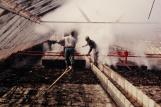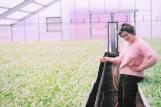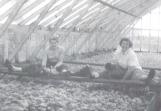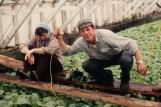1
Flue-Cured TobaccoAugust 2008
Bothwell, Ontario, Canada
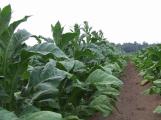 Credits:
Credits:Courtesy of Bothwell-Zone & District Historical Society
2
The Greenhouse:The new season begins the mid-part of March with the preparation of the greenhouse. New muck, purchased in the fall of the previous year, was spread across the beds of the greenhouse to a depth of 5 centimetres (two inches). The fresh muck would often contain weed seeds and diseases therefore sterilizing the soil were vital to the growth of tobacco plants. Steam at a temperature of 83 Celsius (180 F) was force under inverted steel pans which were place on the muck beds. Most times, the source of steam was delivered from old steam engines still in operation from the steam engine era.
4
Steaming a greenhouse meant may long hours in a very hot environment as each pan was lifted and moved forward. In later years, applied chemical spray to sterilize the muck eliminated the heavy labour involved in the steaming process each year although steaming every few years was still recommended. Fifty seven grams (two ounces) of tobacco seeds which resembles black pepper would produce enough seedlings to plant eight to twelve hectares (twenty to thirty acres) of tobacco in the field. Seeding was done the first few days in April with the beds kept constantly damp as the seed germinates.6
Watering the beds by hand using a sprinkler on a garden hose took long hours and much patience. New automatic sprinkler systems which moved over the greenhouse beds made the endless job much more time efficient.8
Planting:In the seedling stage, tobacco plants were pulled one by one from the greenhouse bed taking care not to over-pull or thin out the plants too heavily. A heavy pulling impeded the growth of the remaining plants. Only enough plants were pulled to maintain a pulling every other day. The greenhouse work was never a pleasant job for the environment within the greenhouse was hot and steamy or cold and wet depending on the out-of-doors temperature. Plant-pullers sat on planks, in a very uncomfortable position with legs out stretched and backs bent, to move across the beds. Later years, planks where positioned on roll carts in effort to make the task easier.
10
Plants were placed into boxes and delivered to the field for planting. In the early days of growing tobacco, plants were set out by hand. New planting machines were designed to automatically plant, mark rows, space plants, water and fertilize in one operation as technology advanced. The planters in the field had to contented with dusty conditions and cramped confinement.11
nicotiana tabacumJune 2008
Bothwell, Ontario, Canada
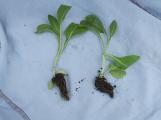 Credits:
Credits:Courtesy of Bothwell-Zone & District Historical Society
